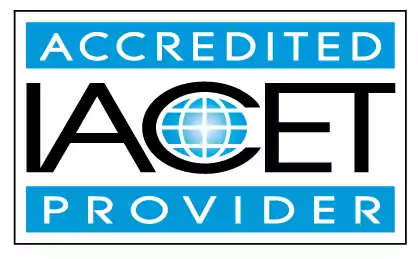Define resilience and identify ways it helps young children overcome toxic stressors.
This page aims to define resilience and explore its role in helping young children overcome toxic stressors. Additionally, it provides valuable insights into common interaction strategies that promote a positive classroom environment for young children. Ideal for early childhood education and child care centers.Trainings incorporating this outcome
CDA Subject Areas
Proficiency Level
Target Audience
Topic Areas
States
Alabama (14) Alaska (14) Alberta (18) Arizona (14) Arkansas (7) Australia (14) British Columbia (1) California (14) Colorado (14) Connecticut (14) Delaware (14) District of Columbia (14) Florida (14) Georgia (12) Hawaii (14) Idaho (14) Illinois (8) Indiana (14) Iowa (14) Jamaica (13) Kansas (14) Kentucky (7) Louisiana (14) Maine (14) Manitoba (13) Maryland (17) Massachusetts (13) Michigan (14) Minnesota (13) Mississippi (14) Missouri (6) Montana (14) Nebraska (12) Nevada (9) New Hampshire (14) New Jersey (9) New Mexico (14) New York (12) Newfoundland and Labrador (14) North Carolina (11) North Dakota (14) Nova Scotia (12) Ohio (14) Oklahoma (14) Ontario (7) Oregon (11) Pennsylvania (11) Prince Edward Island (12) Puerto Rico (14) Quebec (12) Rhode Island (14) Saskatchewan (14) South Carolina (7) South Dakota (14) Tennessee (8) Texas (14) Thailand (13) United Kingdom (13) Utah (14) Vermont (14) Virgin Islands (13) Virginia (14) Washington (14) West Virginia (14) Wisconsin (13) Wyoming (12)
120 hours courses
45 hours courses
32 hours courses
30 hours courses
24 hours courses
16 hours courses
5 hours courses
4 hours courses
3 hours courses
Related Outcomes
- Identify appropriate practices for identify and demonstrate an children: Identify examples of appropriate activities for different ages
- Identify appropriate practices for identify and demonstrate an children: Identify importance of individual planning
- Identify appropriate practices for identify and demonstrate an children: Define Developmentally Appropriate Practice
- Identify common interaction strategies to help promote a positive classroom environment for young children.
- Define active play in the early childhood classroom and describe its benefits for young children.
- Identify the importance of math instruction with young children.
- Identify strategies for the child care provider that will promote successful child development. Identify strategies for working with children with special needs
- Define and identify common signs and behaviors of children and youth with fragile x syndrome.
- Define and identify common signs and behaviors of children and youth with anxiety.
- Define and identify common signs and behaviors of children and youth with cerebral palsy.
- Define and identify common signs and behaviors of children and youth with hearing loss.
- Define and identify common signs and behaviors of children and youth with conduct disorder.
- Define and identify common signs and behaviors of children and youth with ADHD.
- Define and identify common signs and behaviors of children and youth with fetal alcohol syndrome.
- Identify resources to help children discover, learn, and experience in a natural play environment.
- Define self-esteem and identify issues and strategies for support of school age children.
- Identify the types of barriers children's with disabilities/special needs face and ways to adapt curriculum to fit those needs.
- Give examples of strategies caregivers can teach young children to cope with grief in healthy ways.
- Define and identify common signs and behaviors of children and youth with Autism Spectrum Disorder.
- Identify appropriate practices for identify and demonstrate an children: components of a lesson plan
Related Articles
- Cross-Cultural Toilet Training Practices
- Nurturing Young Minds: The Role of Early Childhood Educators in Supporting Children's Mental Health
- Supporting Your Child’s Emotional Well-Being During the School Year
- The Emotional First Aid Kit for kids: Grounding Techniques, Calming Exercises, and Comforting Words
- Jingle All the Way to Emotional Regulation: Teaching Kids to Manage Holiday Stress
- Elf on the Shelf or Stress on the Shelf? Recognizing Holiday Anxiety in Kids
- Trauma and Tantrums: How Stress Shapes Behavior (and How to Help)
- Holiday Hazards 101: The Childproofing Guide to Tinsel, Toys, and Tiny Tree Lights
- How childcare professionals can de-stress during the holiday season
- Frosty Fun: Trauma-Informed Play for Resilient Young Learners
- How to Foster a Growth Mindset in Young Children
- Trauma-Informed Care: Why Your Classroom Isn’t Complete Without a Little Extra Empathy
- The Importance of Trauma-Informed Care in Early Childhood Classrooms
- How Early Educators Can Inspire Big Dreams in Little Minds
- Trauma-Informed Care Strategies for a Calmer 2025 Classroom
- Resolutions for Resilient Educators: Self-Care and Growth Tips
- Emotions in Motion: Teaching SEL & Emotional Regulation to Preschoolers
- 🧠 What Shapes a Child’s Strength, Confidence, and Emotional Growth?
 12 CEUs
12 CEUs